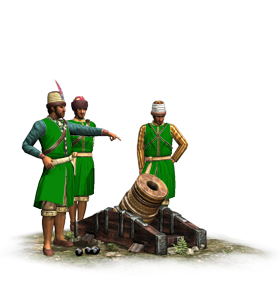Difference between revisions of "Bombardment Mortars (ETW Unit)"
Tango12345 (talk | contribs) (new unit page) |
Tango12345 (talk | contribs) (→Factions) |
||
| Line 11: | Line 11: | ||
==Factions== | ==Factions== | ||
*[[Image:Mamelukes.jpg|25px]] [[Mamelukes (ETW Faction)|Mamelukes]] | *[[Image:Mamelukes.jpg|25px]] [[Mamelukes (ETW Faction)|Mamelukes]] | ||
| − | *[[Image:Ottoman_flag.jpg|25px]] [[Ottoman Empire (ETW Faction)]] | + | *[[Image:Ottoman_flag.jpg|25px]] [[Ottoman Empire (ETW Faction)|Ottoman Empire]] |
[[Category:Empire Total War Units]] | [[Category:Empire Total War Units]] | ||
[[Category:ETW Artillery]] | [[Category:ETW Artillery]] | ||
Revision as of 02:55, 4 October 2011
A mortar is a large calibre, fixed artillery piece that lobs an explosive shell in a high arc at the enemy.
Overview
To the uneducated eye, a mortar looks like a large, stumpy cooking pot, set at an angle in a heavy wooden frame. Indeed, the weapon’s name may even have come from its similarity to the mortars used to grind spices. Mortars use indirect fire, firing their shells high into the air to plunge down on enemy positions. This makes them ideal for use in siege warfare.
Unlike a howitzer, a mortar uses a fixed, and relatively small, charge of gunpowder to propel its shell. Range is adjusted by changing the angle of fire; accuracy is subject to winds and weather, thanks to the flight path. There is also a practical minimum range to mortar fire: no artilleryman is going to drop a shell so close that he will be caught in the blast. Their size, expressed in terms of the diameter of shell they fire, indicates their destructiveness.
Mortars have returned to favour with armies since the First World War. Modern designs, based on the British Stokes trench mortar, come in many sizes. Most can fire shells with proximity fuses as anti-personnel rounds. The larger examples can fire sophisticated “smart” munitions that guide themselves onto targets.
